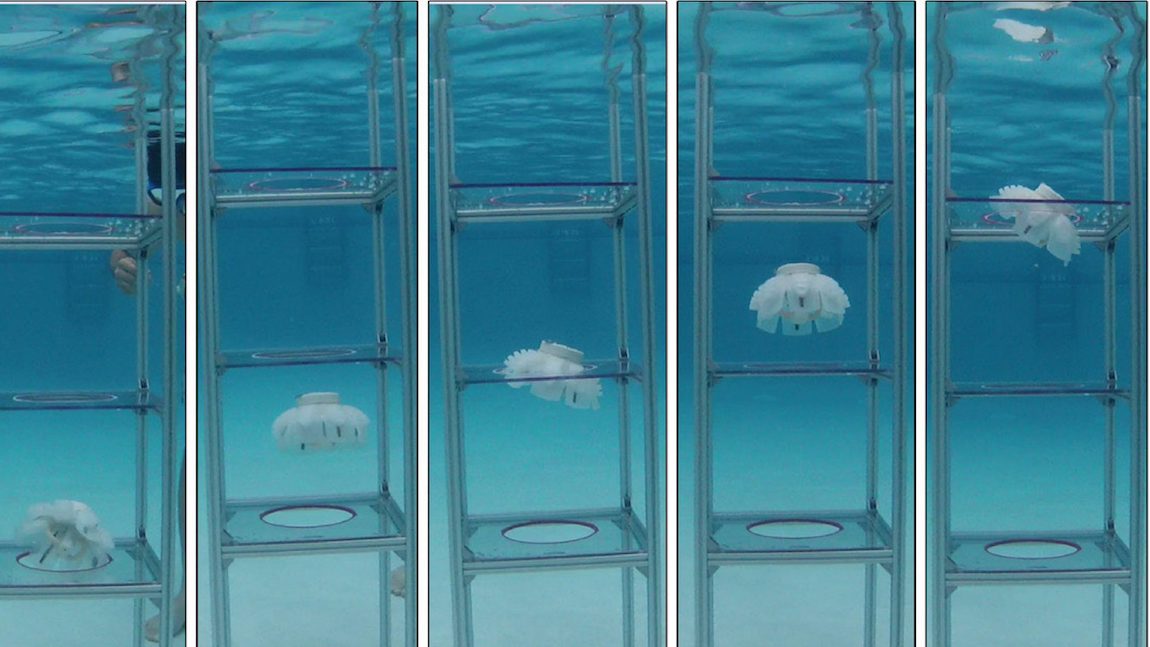
Robotic Jellyfish Are Taking Over!
In the never ending search for ways to safely study coral in the world’s oceans, a new robot “jellyfish” began being tested for real world use in 2018.
The robots – or “jellybots” – which are propelled by hydraulic-powered tentacles controlled by twin impeller pumps that allow it to swim and steer, resemble the Moon Jellyfish in its larval stage.
Having soft silicon tentacles and the ability to squeeze delicately through small places will give the jellybots the ability to get in and around the tight spaces in coral reefs and other underwater obstacles to perform studies and observe the health of ocean ecosystems.
 One of the inventors of the jellybot, Dr Erik Engeberg, said: “Biomimetic soft robots based on fish and other marine animals have gained popularity in the research community in the last few years. Jellyfish are excellent candidates because they are very efficient swimmers.
One of the inventors of the jellybot, Dr Erik Engeberg, said: “Biomimetic soft robots based on fish and other marine animals have gained popularity in the research community in the last few years. Jellyfish are excellent candidates because they are very efficient swimmers.
“Their propulsive performance is due to the shape of their bodies, which can produce a combination of vortex, jet propulsion, rowing, and suction-based locomotion.”
He added: “A main application of the robot is exploring and monitoring delicate ecosystems, so we chose soft hydraulic network actuators to prevent inadvertent damage.”
There is a danger, of course, that some marine animals that feed on jellyfish might confuse them for the genuine article, so the scientists developing them have considered adding some sort of acoustic warning, or simply giving them an unpleasant taste to keep fish and sea turtles from being harmed.
Curriculum Reference Links
- Nature of Science / Investigating in Science / 5: Students should be able to review and reflect on the skills and thinking used in carrying out investigations, and apply their learning and skills to solving problems in unfamiliar contexts

